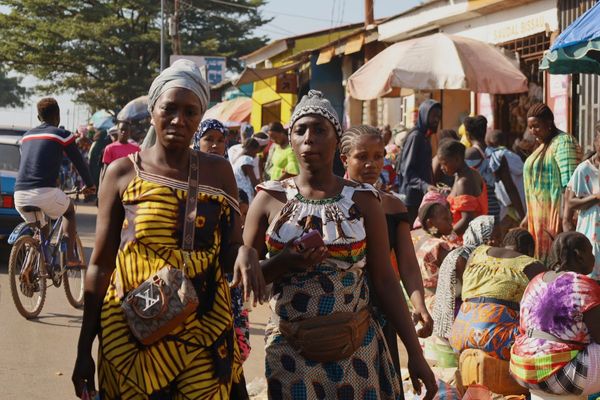South Australia’s toxic algal bloom has arrived on Adelaide’s beaches, deepening public concern about the unfolding catastrophe which has affected the state’s coastline since March.
Until recently, city beaches had escaped the worst of the deadly bloom of Karenia mikimotoi algae, which had devastated marine life from the Fleurieu peninsula, the Kangaroo Island, the Yorke peninsula and the Ramsar-listed Coorong amid warmer-than-normal sea temperatures.
But in the wake of a major storm on 24 June, masses of dead rays, fish and rare and unusual marine life began washing up from north of Grange jetty to south of Christies beach surf club.
“Until that time, it hadn’t hit metro Adelaide,” said Dr Michael Bossley, a marine biologist. “Suddenly, the people of Adelaide and the government and just about everybody are doubling down on their concern.”
This week, South Australia’s environment minister, Dr Susan Close, said the state was “helpless in the force of nature”. She said the bloom was unlikely to disappear any time soon and could return in future.
“The algal bloom is a dynamic situation. Its movement depends on weather and water conditions, and [that] makes the effect on people and wildlife unpredictable.”
The state government had hoped that storms and cooler water temperatures would help break up the bloom. So far that has not happened; instead, storms have helped the algae spread to new waterways.
Testing by the state government confirmed the algae’s presence in West Lakes, a lakeside suburb in Adelaide’s west, with further testing being done at 14 sites, including the Port River, home to the Adelaide dolphin sanctuary.
(September 1, 2024)
A persistent marine heatwave affects the waters off South Australia, kicked off with sea surface temperatures reaching 2.5C above average.
(March 18, 2025)
A mysterious sea foam appears at beaches on the Fleurieu Peninsula, with reports of more than 100 surfers becoming ill, and deaths of leafy sea dragons, fish and octopi.
(March 25, 2025)
Marine biologists from the University of Technology Sydney find high numbers of a tiny harmful algal species called Karenia mikimotoi in water samples collected from affected beaches.
Prof Shauna Murray – who identified the algae under the microscope and by analysing its DNA – says while still not well understood, K mikimotoi is thought to produce a reactive oxygen that caused gill cell damage in fish – which means they can not breathe.
(May 13, 2025)
By this point, more than 200 marine species have been killed by the bloom, which stretches along more than 150 kilometres worth of coastline.
(May 26, 2025)
A powerful storm and high tides washes the algae into the Coorong, staining the water like strong tea before turning it into a slurry.
(June 6, 2025)
Water testing confirms the presence of the algae in the Coorong.
(June 24, 2025)
Abnormally high tides, strong winds and large waves lashes the South Australian coastline, with multiple reports of fish deaths along the Adelaide metropolitan coastline reported in the aftermath.
(July 1, 2025)
Testing confirms the toxic algae had entered West Lakes. While the algae has been detected at the inlet, it had not yet been detected at three other testing sites.
Since the start of the bloom in March, about 8,000 dead marine animals have been recorded as part of the SA Marine Mortalities project, affecting 390 different species.
Fishing conservation charity OzFish has been part of that statewide citizen science effort.
“We know that sponge gardens and shellfish beds – mussels, native oysters, razor fish – a lot of those areas are now considered graveyards, because they’ve been completely wiped out by the bloom,” OzFish South Australian project manager Brad Martin said.
“The concern at the moment is whether [the algae] is going to enter urban estuaries and waterways,” he said. “The Onkaparinga, West Lakes and the Port River are all areas of concern; they’re popular recreational fishing sites, with access to the ocean.”
The fish were being “poisoned, they’re being choked to death, and they need to bounce back as quickly as possible,” said Asher Dezsery, executive officer for RecFish SA, the peak body for fishers and tackle shops.
That not only affected catches – some fisheries, like Goolwa pipis, had experienced mortality rates of 37% – but had flow-on effects for tourism and businesses. Many tackle stores were on the brink of shutting down, he said.
On Friday, the state government met commercial fishers, tourism operators and local councils as it prepared a recovery plan for when the bloom eventually recedes.
While sea surface temperatures in shallow waters have been falling, marine heatwave conditions – with water temperatures 1 to 2C above average – have persisted in deeper continental shelf waters around Kangaroo Island and southern Yorke peninsula.
Marine heatwaves, which had triggered the bloom, were happening around Australia and all around the world, Bossley said. “It’s climate change happening.”







